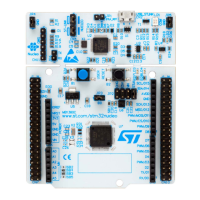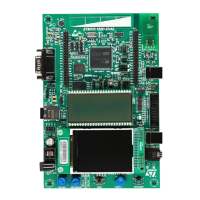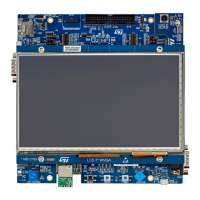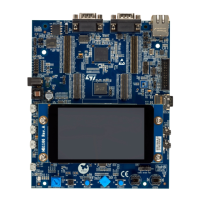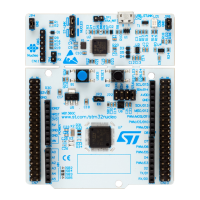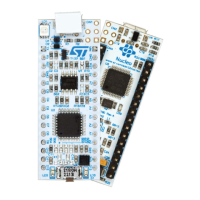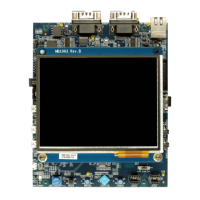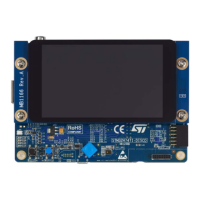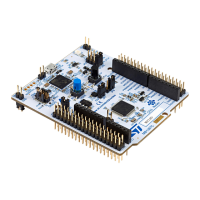Functional description of the STM32H745I-DISCO demonstration modules UM2222
70/76 UM2222 Rev 2
The Cortex-M4 is executed from D2 RAM. It uses only D2 domain peripherals, to put the D1
domain in standby mode safely.
9.4.2 Features
Analog features:
ADC oversampling, 16 bits resolution, Fast channels mode, dual ADC mode.
Data acquisition and sampling using the STM32H7 peripherals
Dedicated PC GUI:
The Digital Signal Oscilloscope (DSO) comes with a dedicated PC Graphical User Interface.
This GUI is available under PC_Software within the demonstration Package, to change the
oscilloscope settings, visualize the acquired signals and perform mathematical processing.
Communication between the GUI and the STM32H7 is ensured by UART through ST-Link
Virtual COM port.
Signal generator:
The signal generator is based on the STM32H745 DAC to generate different signal patterns.
The signal can be then injected into the Oscilloscope using an external wire connection from
the DAC output pin to the ADC input pin.
The application provides an HMI on the board LCD display to change the following
configurations:
– Signal type: DC, square, sine, triangle, escalator or noise
– Signal frequency: 5,000 kHz to 130,000 kHz
– Signal amplitude: 0.100 V to 3.300 V
– Brief status current output signal
Dual Core aspect:
The demonstration is split between the STM32H745 Cores (Cortex-M4 and Cortex-M7) as
follow:
• Cortex-M4 to handle data acquisition and communication with the PC GUI
• Cortex-M7 to handle the auto test mode (LCD HMI, DAC control)
– Cortex-M7 goes to low power mode when auto test mode is switched off.
– User button let the STM32H745 D1 power domain enter or exit standby mode
– The entire STM32H745 D1 power domain is Standby in stop mode including the
FLASH, Cortex-M4 continue running his code from D2 domain RAM.
The figure below summarizes the whole process and shows how the different demonstration
modules are split between the Cortex-M7 and Cortex-M4.
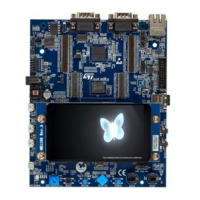
